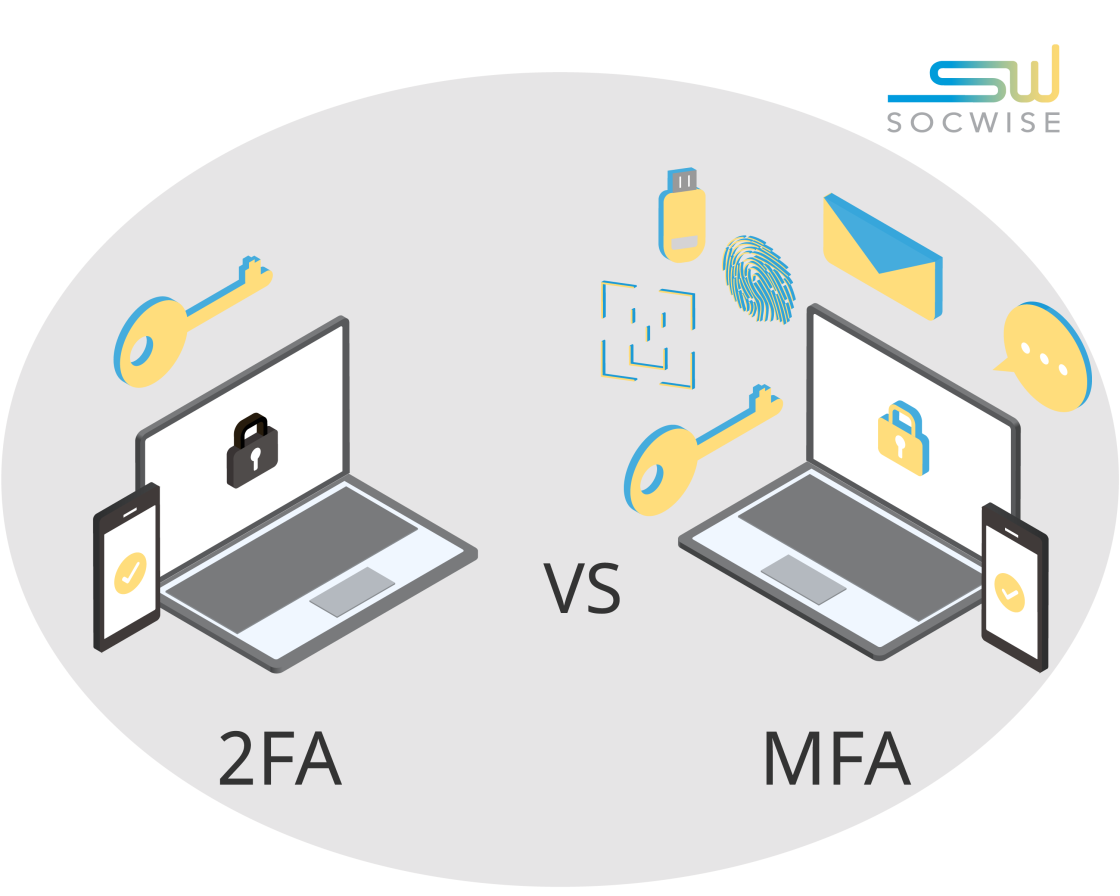The Importance of Multi-Factor Authentication in the Age of NIS2 Compliance
The world of cyber security is constantly developing and it is increasingly challenging for companies to protect their information systems against a growing number of increasingly sophisticated threats. The NIS2 directive, adopted by the European Union in 2022, is a significant milestone in the protection of critical infrastructures and networks as it sets new requirements for member states and companies to manage cyber security risks. In this context, the use of Multi-Factor Authentication (MFA) plays a particularly important role in the security strategy of companies as it provides effective protection against access-based attacks, which form the basis of most data protection incidents.
The Essence of Multi Factor Authentication
MFA is a security procedure that ensures user access to IT systems by applying several independent authentication factors. MFA generally uses a combination of three main factors:
- Something the user knows: This can be a password, PIN or other information known only to the user.
- Something the user owns: This can be a physical device such as a smartphone, security token or smart card that generates or receives an authentication code.
- Something that is the user: This usually refers to biometric identification such as fingerprint, facial recognition or voice recognition.
By using MFA, access security can be significantly increased since it is not enough for the attacker to obtain a single authentication factor to gain unauthorised access to a given system or database.
Why is the Application of MFA Important from the Viewpoint of NIS2?
Increasing Protection Against Cyber Attacks
One of the biggest advantages of MFA is that it provides effective protection against the most common and destructive cyber attacks, such as password theft, phishing or brute force attacks. As the attackers use increasingly sophisticated methods, traditional password protection is no longer sufficient to protect critical systems. The introduction of MFA makes it more difficult for attackers as they would have to obtain several independent authentication factors in order to gain successful access.
Ensuring Compliance with the NIS2 Directive
The NIS2 directive aims to minimise cyber security risks and improve rapid response capabilities. The use of MFA directly contributes to these goals by providing stronger access protection that reduces the risk of unauthorised access. In addition, the implementation of MFA will help companies meet the more stringent cybersecurity requirements of the NIS2 directive, including access control requirements.
Reducing the Risk of Incidents
MFA significantly reduces the risk of successful cyber incidents. Since most data breaches occur as a result of unauthorised access, implementing MFA can help minimise the success of these types of attacks. This is particularly important under the NIS2 Directive, where the rules for reporting and handling cyber security incidents have become more stringent and incident prevention has become a top priority.

Challenges and Solutions of MFA Implementation
While MFA offers many benefits, implementing it can also be challenging, especially in a large enterprise environment. However, these challenges can be addressed with proper planning and technological solutions.
User Acceptance
One of the biggest challenges when implementing MFA can be user resistance, as many people find multi-factor authentication inconvenient. Users are often afraid of new technologies, especially if these are more complicated than usual. To address this, it is important for companies to provide detailed education and communication to users so they understand why MFA is necessary and how it helps protect their data.
Integration into Existing Systems
The implementation of MFA often requires complex integration with existing IT systems. This is especially true if the company uses many different platforms and applications, each of which needs to be adapted to the authentication process. Choosing the right MFA solutions that can be easily integrated with the existing infrastructure is key to this process.
Costs and Resources
Implementing MFA has cost and resource requirements, including the need for new hardware, software and user support. However, these costs pay off in the long run as significant financial damage and reputational losses can be avoided through prevented cyber-attacks and improved security.
MFA and Future Cyber Security Trends
As cybersecurity threats continue to evolve, the use of MFA and other advanced security solutions becomes increasingly important. In the future, biometric identification will become more and more common as part of MFA as this technology provides additional protection against increasingly sophisticated attacks.
In addition, the Zero Trust security model, which assumes that no user or device is trusted within the network and requires continuous authentication and verification, is gaining prominence. MFA plays a key role in this model by ensuring that all users and devices are properly authenticated before they are granted access to corporate resources.
Closing Thoughts
The NIS2 directive places a heavy responsibility on companies to implement advanced cyber security measures for protecting critical infrastructures and information systems. In this environment, Multi-Factor Authentication is not just an option but a necessary tool in defence against cyber security threats. The introduction of MFA not only facilitates compliance with legal requirements but also significantly increases the overall security level of the organisation, thereby protecting the company from serious financial and reputational damage that may result from a successful cyber attack.
To prepare for the cybersecurity challenges of the future, companies must be proactive and implement advanced authentication methods such as MFA to ensure the protection of networks and data in the long term. MFA is not just a technological tool, but an integral part of the security culture that contributes to safe operation in the digital world.


